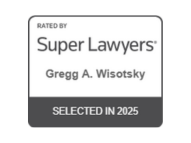One of the most widely recognized images of Superstorm Sandy’s devastation was that of a Seaside Heights’ roller coaster sitting partially submerged in the Atlantic Ocean. Roller coasters are intertwined with boardwalks which are iconic images of New Jersey.
But while roller coasters can be a fun and safe way to satisfy thrill seekers in the Garden State and beyond, accidents have happened in the past. Now new information coming from a study by the American Academy of Neurology is linking these rides with a type of brain injury. According to the study, the big coasters can cause subdural hematoma characterized by chronic headaches. The A.D.A.M. Medical Encyclopedia defines subdural hematoma as “a collection of blood on the surface of the brain.”
The question becomes, what type of legal remedies are available for people in New Jersey who suffer from subdural hematoma or coaster injuries in general? New Jersey has the Carnival-Amusement Rides Safety Act (CARSA) which imposes a number of regulations upon amusement park owners/operators, but also can affect suits for these types of injuries.
There are two types of law suits a victim can bring; a personal injury suit and a products liability suit.
First, to bring a personal injury law suit against an amusement park operator, CARSA mandates that the injured person has to give a written report to the operator with all of the details of the accident within 90 days. (N.J.S.A. 5:3-37). There are ways to have this time limit extended. (N.J.S.A. 5:3-38).
However, if the operator does not have the written report requirement posted “conspicuously” in English and in at least five different locations, it may not be a prerequisite for a suit.
In order to succeed in a personal injury suit, the plaintiff must prove that the owner/operator violated the standard of care that he owed to the plaintiff.
In a coaster accident case in the 1950s, the standard of care owed to patrons of roller coasters was articulated as “care commensurate with the reasonably foreseeable risk of harm, such as would be reasonable in light of the apparent risk.” Kahalili v. Rosecliff Realty, 26 N.J. 595, 603 (1958).
A plaintiff can also add in a claim that the owner/operator did not follow regulations in CARSA that, if followed, would have prevented the injury from occurring.
Another avenue for compensation can be found through a products liability law suit in which a plaintiff alleges a claim of a defect in the ride. This can be through claims of manufacturing defects, design defects or a failure to warn. These suits are typically brought against the ride manufacturers rather than the owner/operators.
As more information becomes available on the link between subdural hematoma and roller coasters, new legal precedents may arise. Until then, the aforementioned traditional legal framework for injuries occurring on roller coasters in New Jersey will apply.












